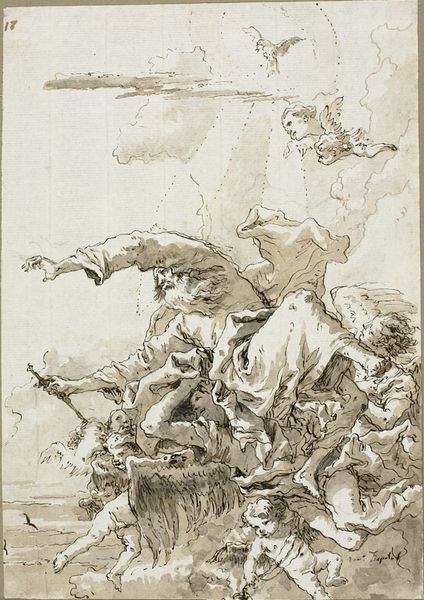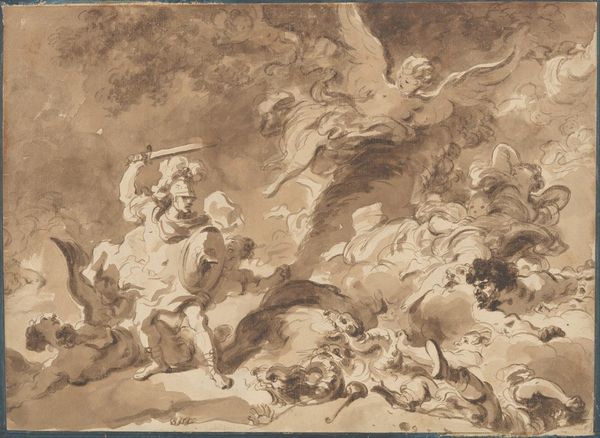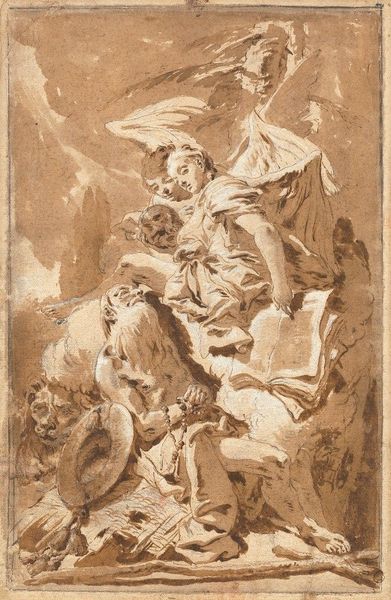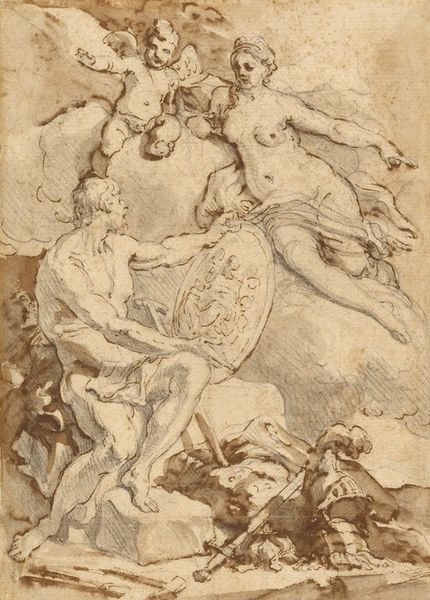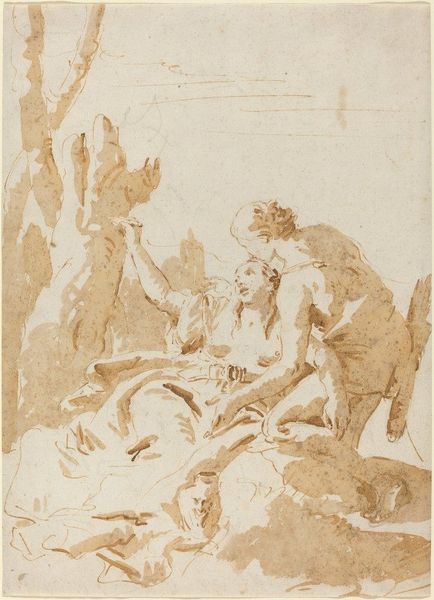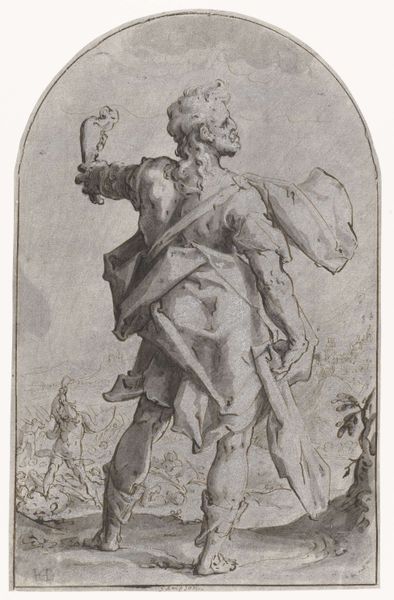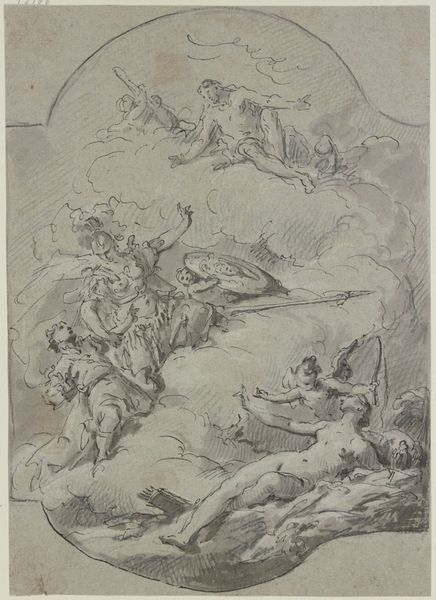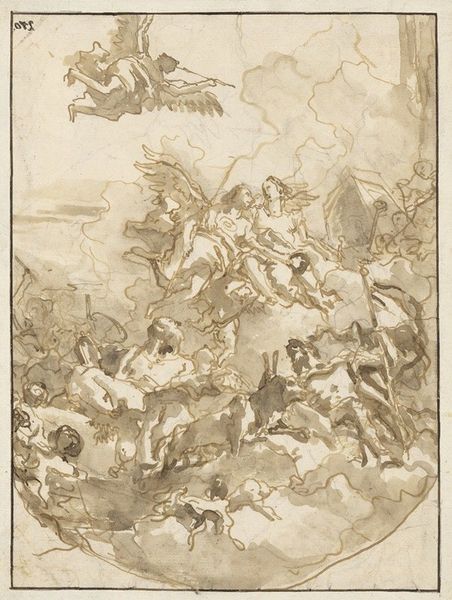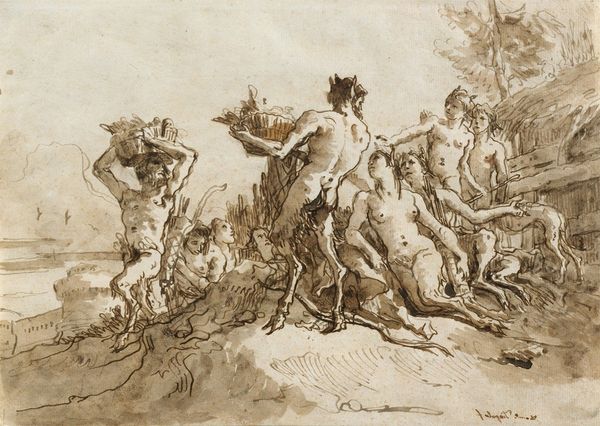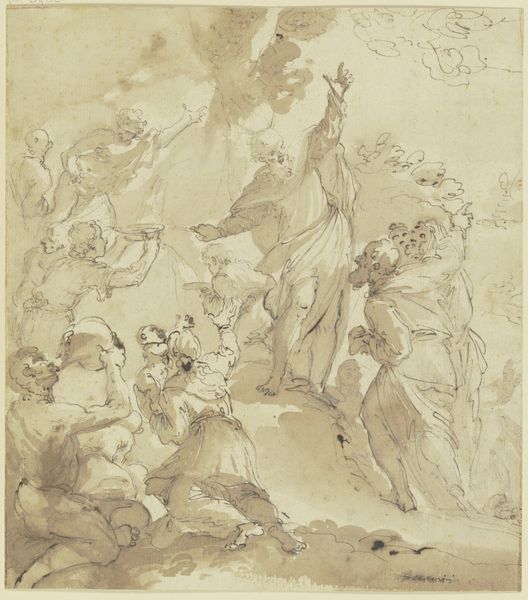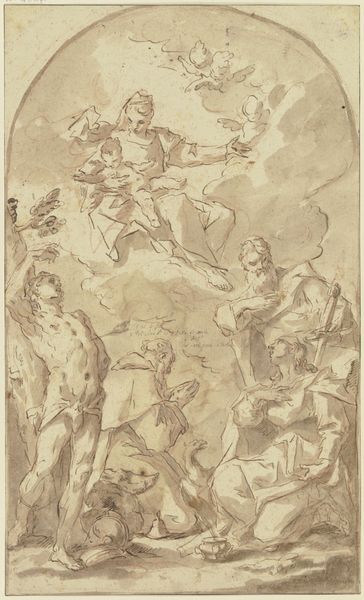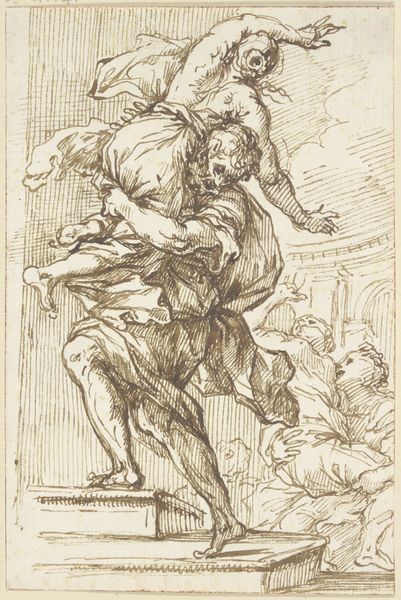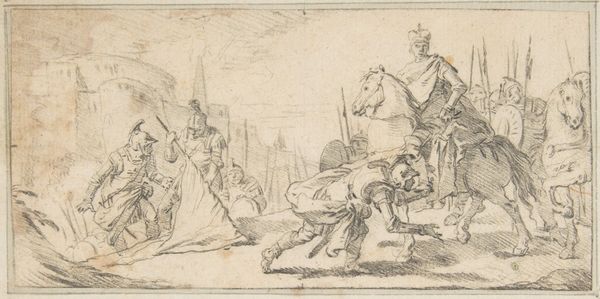
God the Father Supported by Angels in the Clouds, I c. 1759
0:00
0:00
drawing, paper, ink, chalk, pen
#
drawing
#
allegory
#
baroque
#
pen sketch
#
pencil sketch
#
landscape
#
figuration
#
paper
#
ink
#
chalk
#
pen
#
rococo
Dimensions: 279 × 196 mm
Copyright: Public Domain
Editor: So this is "God the Father Supported by Angels in the Clouds, I," a drawing by Giovanni Domenico Tiepolo from around 1759. It's done in pen, ink, chalk and wash on paper, quite a mix. The angels look like they're struggling a bit, giving it a dramatic feel, which contrasts against what I would imagine is supposed to be something serene. What do you make of it? Curator: What strikes me is the active making – the layered inks, the visible chalk underdrawing. Consider the Rococo period’s patronage system: rapid production of drawings like these were essentially a form of artistic labor, churned out for collectors. Think of the cost of paper and the labor involved in its production, too. Each material contributes to the artwork's value, a value dictated as much by the market as by artistic merit. Editor: So the value is less about the depiction of God and more about the materials themselves and the process? Curator: Precisely! The 'divine' subject matter almost becomes a commodity here. Consider Tiepolo's studio, the division of labor. How much did he delegate? Each pen stroke, each chalk line, is a unit of production. We’re left with a compelling tension: spiritual representation rendered through decidedly earthly, material processes, where consumption patterns shaped even the way God was visualized. What about the symbolism here relates to this relationship of commodity and religion? Editor: Hmm, so even something that seems so heavenly can be viewed through the lens of earthly concerns of making and consuming. Thanks, I didn’t think to see it that way! Curator: These drawings give an insightful look at labor practices during the Rococo era, bridging the gap between high art and everyday life.
Comments
No comments
Be the first to comment and join the conversation on the ultimate creative platform.
